Stargazing in India 101: The Best Milky Way Viewing Sites
There are a few things to address before you pack your bags and set off on your epic stargazing adventure. Firstly, India is a huge place, so only the most dedicated of stargazers would do a cross-country trip just to camp out at night to catch a glimpse of the Milky Way. For the rest of us casual astronomy fans, it’s best to pick 1 place for a trip and explore multiple stargazing sites within that region. Not forgetting of course all the sightseeing you can do by day.
Key Factors to a Good Stargazing Experience
When it comes to getting the best view of stars, including the Milky Way, it comes down to meticulous planning and some amount of luck.Of the three key factors—no light pollution, clear skies, and high altitude—two of them can be predicted to a reasonable extent, and there are other measures you can take to ensure the best possible chance of getting that beautiful night-time shot.
Firstly, the most important thing is to make sure that your stargazing site has little to no light pollution. The less artificial lighting there is—be it from streetlights, office buildings, or commercial billboards—the more the natural light from the stars will stand out. Naturally, you’d want to pick a spot that’s far from the city.
Secondly, high altitude is also important, though if you go to a desert location like the Great Rann of Kutch in Gujarat, there’s enough open space that natural formations like mountains won’t block the view. Lastly, the weather: the skies have to be clear. Pick a place that has clear skies year-round, and definitely check on Accuweather (with personalised “Astronomy” forecasting) before you plan a trip.
Lastly, try to go during the new moon so that moonlight doesn’t interfere with the starlight.
The best part about the places listed below is that they are already prime stargazing sites. Located in remote countryside regions of India, these places require nothing more than patience and an attentive set of eyes in order to show you the Milky Way.
Best Places for Stargazing in India

1. Stargazing in Leh, Ladakh
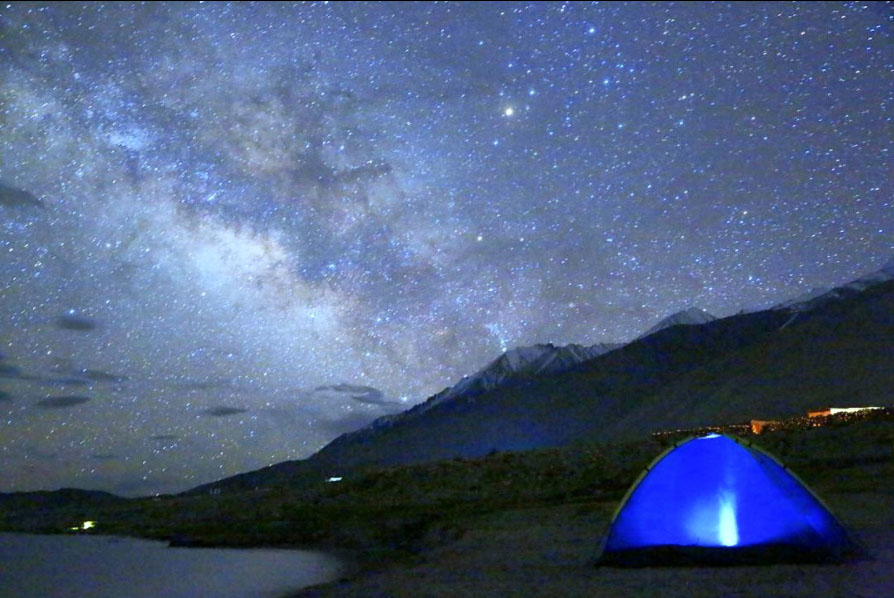 Credit / @blueplanetwild
Credit / @blueplanetwild
Ladakh is renowned for its remote mountain beauty and is especially known as a prime spot for stargazing. Popular places include Nubra Valley and Leh, the biggest town in the district. During the day, check out the Pangong-Tso Lake that stretches from India to Bhutan, and at night, relax and soak in the starry sky.
Because Ladakh lies in the least-populated region of India, transportation there takes some time, though it is definitely doable. You can either take a flight from Delhi to Leh itself, on major airlines like Indian Airlines or Jet Airways, or you can take a 2-day road journey either from Manali or Srinagar. For intra-region travel, the most wallet-friendly way is through public buses, which have fixed routes and schedules. Also, take note that because Ladakh is situated so high above the sea level—ranging from 3,600m to 5,700m above—around two days will be required to acclimatise to the thinner air and cold weather. 
2. Great Rann of Kutch, Gujarat
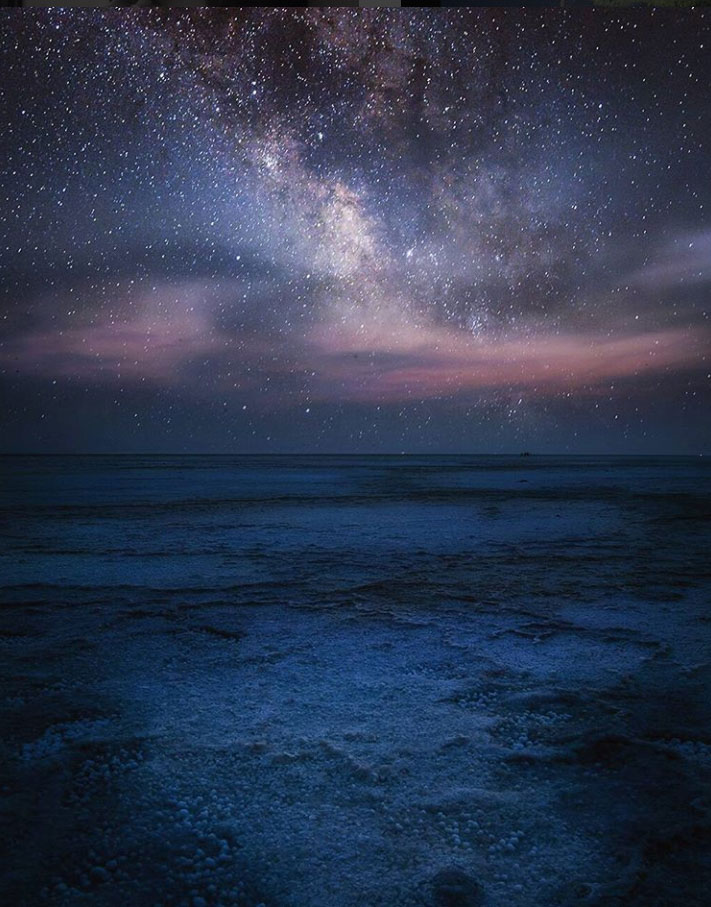 Credit / @upamanyubhattacharya
Credit / @upamanyubhattacharya
The Great Rann of Kutch is a vast salt desert that lies at the top of the Kutch district in Gujarat, the westernmost state in India. Spanning more than 7,000 square kilometres, the striking white expanse is a surreal sight for tourists used to the hustle and bustle of more conventional Indian tourist sites like Mumbai and New Delhi. It’s the perfect place to enjoy a camel ride, or simply watch the sun go down, though if you take a stroll in the day make sure to bring sunglasses and load up on the sunblock. At night, watch the stars come out to play and mirror the shimmering stretch of white salt all the way to the horizon.
The best way to get there is via Bhuj, the administrative center of Kutch. To get to Bhuj, you can take a train or a flight from Mumbai, or a bus from other places in Gujarat itself. For accommodations, a popular choice is the Gateway to Rann Resort at Dhordo.

3. Sonmarg, Jammu & Kashmir
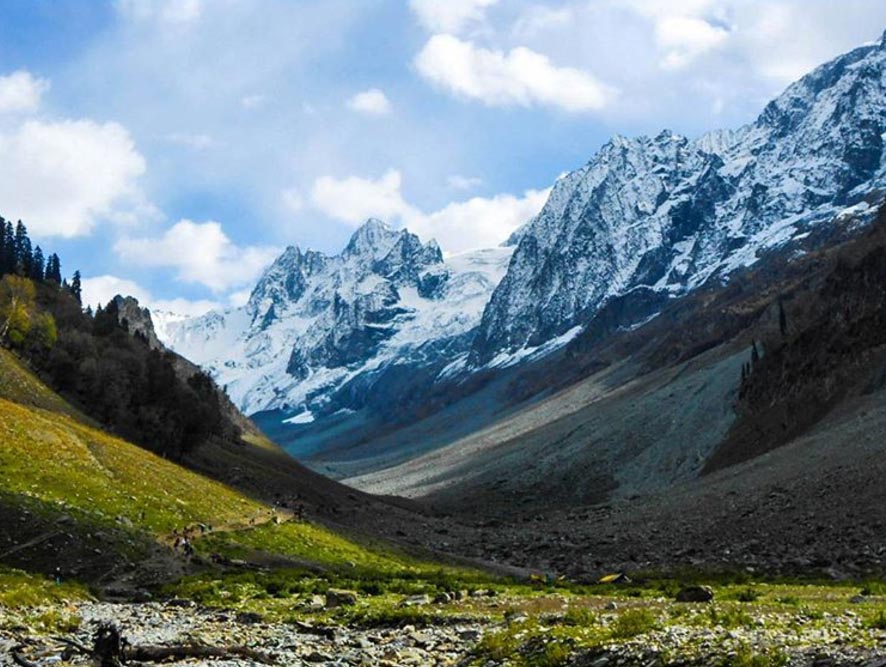 Photo Credit / @nikhilrajpal18
Photo Credit / @nikhilrajpal18
Sonmarg, literally translated, means “Meadow of Gold,” and understandably so. Not only is this tranquil valley set against the backdrop of snowy white Himalayan peaks, but at night, these mountaintops provide the perfect frame for the arc of the Milky Way. In the day, take in more of the region’s natural splendour by visiting Thajiwas Glacier and Gadsar Lake.
The nearest airport is in Srinagar, located 70km away, and is well-connected to other major cities like Jammu, New Delhi, Mumbai, and Bangalore. From there, your best bets are taxis, state-run buses, or special deluxe buses that run daily.

4. Coorg, Karnataka
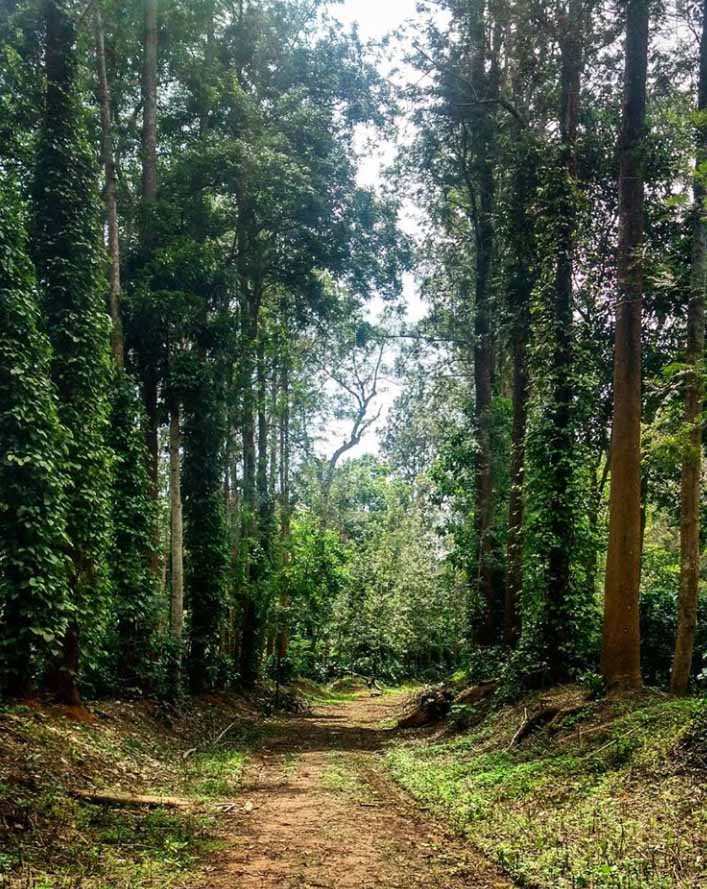 Photo Credit: Priya Choudhary @travelog29
Photo Credit: Priya Choudhary @travelog29
Nicknamed “the Scotland of India,” Coorg, officially known as Kodagu, is the most affluent hill station in Karnataka. Visit the local coffee and spice estates, and be sure to have a picnic by Abbey Falls, Coorg’s most famous landmark. If you’re feeling adventurous, check out the Nagarhole National Park as well, home to tigers, jungle bison, and Asian elephants. For optimal stargazing conditions, you will want to move away from larger towns like Madikeri and perhaps take up a homestay in smaller villages like Karada, Virajpet, and Cherambane.
The nearest airport is in Mangalore, about 160km away, and it is connected to major Indian cities like Mumbai, Hyderabad, and Chennai. You can also take a bus provided by the Karnataka State Road Transport Corporation from Mangalore or even further cities like Mysore and Bangalore.

5. Kibber Village, Spiti Valley
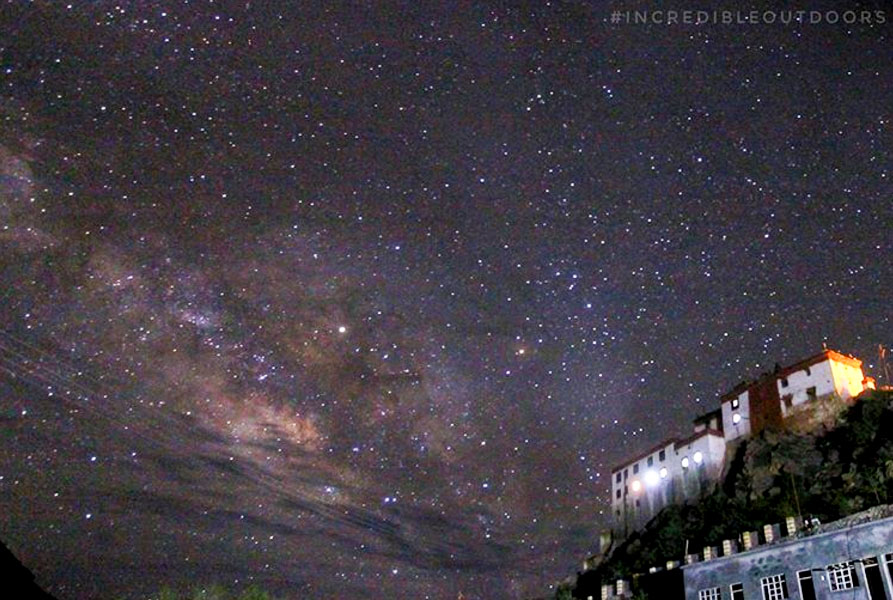 Photo Credit: @travelling_monk
Photo Credit: @travelling_monk
Spiti Valley, as a cold mountain desert, seems almost oxymoronic, but that’s because it remains tucked underneath the formidable Himalayas of the Himachal Pradesh, and is therefore impossible to reach for half the year due to snowfall. During the summer months, however, it’s almost like a pristine, untouched wonderland, where you can visit monasteries dating back hundreds of years, do a homestay with Spitian families to learn more about their unique culture, and even shop for traditional Tibetian and Buddhist handicrafts like prayer flags, bowls, and statues at the Kaza market area. And at night, of course, there are a multitude of places to stargaze, of which Kibber village is probably the most well-known.
Best way to get there: 2 road routes leading up, one from Shimla via the Kinnaur valley (minimum of 2 days), one from Manali (12-14 hours). Best to make your way there slowly so that you can acclimatise, and those with heart or lung conditions should definitely consult their doctor before going.

Quick tip. Because all these places are fairly remote and located in areas with temperamental seasons, take note of when the best times to visit are, as well as any permits you might need to acquire before going.
More Articles With Activities
Home to a multicultural population, Chennai, the capital of Tamil Nadu, is a historical city of contrasts. Scorching hot during summer and unbelievably crowded, it is steeped in tradition yet charmingly modern and cheerful. Chennai never disappoints its visitors. If you only have 48 hours in Chennai — like I did, use your time to savour piping hot… Continue reading 48 Hours in Chennai
Singapore has for centuries, been a melting pot for colliding cultures. Once a key port connecting the major shipping lanes of the East, now an Asian business hub; this populous nation has always attracted many different cultures. The result of such a blending of differing societies is visible throughout the country; and whilst Singapore may… Continue reading Top 10 Singapore Attractions Not To Miss
Goa is a remarkably affordable holiday destination, complete with luxurious beaches, delicious food and stunning landscapes. It is a region of India where attitudes and dress codes are relaxed and visitors to this scenic region are guaranteed to find a wealth of memorable experiences. 7 Fun Things to do in Goa Beyond the Beaches 1)… Continue reading Goa Beyond the Beaches: 7 Great Things to Experience
A constant travel bug, I decided to explore this paradisiacal land of gorgeous beaches and one-of-a-kind sightseeing attractions. Goa — declared as the ‘fun capital of India’ — sits high on many travellers holiday bucket lists. Goa is a beach destination that is a magnet for tourists from India and abroad. Contrary to popular belief though, Goa is not just… Continue reading Goa Beyond the Beaches
The varied landscapes and climatic conditions in India offer natural habitats to about 400 species of mammals. Known for its rich biodiversity, India is home to many unique species – the Royal Bengal Tiger, the Asiatic Lion, the Greater One-horned Rhinoceros, the White-footed Fox, and the Asiatic Elephant amongst others. With over a hundred national… Continue reading The Ultimate Guide to National Parks in India